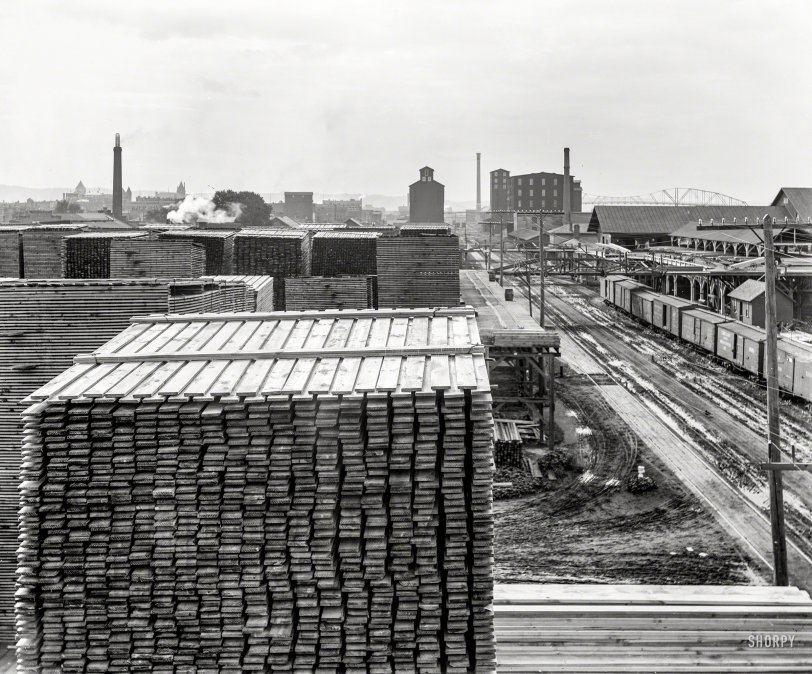


Framed or unframed, desk size to sofa size, printed by us in Arizona and Alabama since 2007. Explore now.
Shorpy is funded by you. Patreon contributors get an ad-free experience.
Learn more.

- Freeze Frame
- Texas Flyer wanted
- Just a Year Too Soon
- WWII -- Replacing men with women at the railroad crossing.
- Yes, Icing
- You kids drive me nuts!
- NOT An Easy Job
- I wonder
- Just add window boxes
- Icing Platform?
- Indiana Harbor Belt abides
- Freezing haze
- Corrections (for those who care)
- C&NW at Nelson
- Fallen Flags
- A dangerous job made worse
- Water Stop
- Passenger trains have right of way over freights?
- Coal
- Never ceases to amaze me.
- Still chuggin' (in model form)
- Great shot
- Westerly Breeze
- For the men, a trapeze
- Tickled
- Sense of loneliness ...
- 2 cents
- Charm City
- What an Outrage
- Brighton Park
Print Emporium
All a Board: 1899

Minnesota circa 1899. "Winona, a sawmill plant." 8x10 inch dry plate glass negative, Detroit Publishing Company. View full size.
A common industry back then
When the woods of the Northeastern US were depleted in the 1880's, loggers turned their attention to NE Minnesota, the northern half of Wisconsin, and Michigan's UP. River junction towns like Minneapolis, Stillwater, and Winona became sawmill towns as White Pine logs were brought down the rivers for milling. This was some of the finest lumber ever cut, and in 1899 the supply still seemed endless.
As the loggers moved north, so did the sawmills, especially once steam replaced water for power. Duluth, Ashland, and Virginia MN became sawmill towns.
The trees weren't endless. Using the primitive tools of the day loggers managed to all but clean out the White Pine in the northern halves of three states by the early 1920's.
Attempts to replant the White Pine using seedlings from Europe were met with failure. These new trees brought White Pine Blister Rust with them and pretty much sealed the fate of the species here.
There were also massive forest fires after logging. All of the slash (branches and tops) were left loose on the ground and once dry, burned like gasoline.
Only a few small stands and scattered individual White Pine trees remain today, replaced primarily by Aspen, the first growth after logging in these parts.
Most of the older homes in the Midwest were built with lumber from these stands, including almost all of the farm houses in the Great Plains that replaced the old sod huts.
As the logs ran out the families that owned timber and logged, like the Weyerhausers and Boeings (yes, that Boeing, and that's a story in itself), moved to either the Pacific Northwest or to the southern states to continue the family businesses.
We still occasionally see a huge White Pine stump, a deadhead log poking up out of a lake, or a logging railroad grade from the logging days in the woods here.
Not Near the Wood
Is that some sort of burning beacon at left?
























On Shorpy:
Today’s Top 5